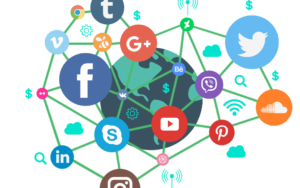What is Universal Design for Learning?
Universal Design for Learning, or UDL, is an educational framework that provides equal learning opportunities for all students. It promotes flexibility in teaching methods and learning environments to meet the needs of a diverse range of learners. Its three guiding principles-multiple means of engagement, representation, and action/expression-offer a more personalized way of thinking about education.
UDL helps in making classes more inclusive by considering the many different ways to engage students, represent information, and show actions. In this regard, physical settings involve hands-on activities, lectures, and group discussions, while digital settings involve text, audio, and interactive simulations. Indeed, offering options for access and expression in the students fosters learning in both contexts. The UDL allows educators to be more inclusive of needs, learning preferences, and cultural backgrounds of all students.

Accessibility at a Distance
Additionally, online learning has a number of accommodations that can be made to make it accessible: digital content compatible with screen readers, including captioning of videos and alt text for images. Clear navigation and consistent formatting also promote general online accessibility, as does the ability to manipulate text size, for the benefit of students with visual, auditory, or cognitive disabilities.
From what I have come across in the course of my studies, I find that accessibility is truly important in keeping me engaged and able to succeed. Assuming that course materials are made available in a variety of formats, I would then be able to select the one that best fits my learning style. For example, video content, for instance, would be more accessible if it had captions so I could follow through with the video and then always go back to what was said. Also, when online discussion boards are presented in an organized, accessible manner, it creates a sense of community that is more inclusive.
Ethical Issues in EdTech
Even as EdTech has the potential to improve learning experiences, there are also attendant ethical complications. The major concerns include privacy and security issues, since most EdTech tools collect personal and academic data. Educators shall make sure this information is properly secured and never used except where needed. Then again, a number of issues regarding fairness exist-not every student has equal access to the internet or devices, which are necessary for online learning. If such gaps are permitted, EdTech further puts poor students at a disadvantage relative to better-off ones.

The balance of these with the benefits of technology involves prioritization of data privacy, advocacy for equal access to resources, and being critical of the tools to adopt. Schools can put in place policies that limit data collection, provide devices or internet subsidies to students in need, and carefully vet the EdTech companies for their commitment to ethical practices.
Ethical Issues in Digital Interaction
The key components of ethical consideration in digital interaction entail respect, privacy, and maintenance of a positive footprint. We should be respectful to others when interacting online, not harassing them, and letting their privacy be private. For this reason, critical thinking in regard to the content being posted needs to be contemplated, as it affects not only ourselves but possibly others. In academic settings, this extends to practicing academic integrity through proper citation and avoiding plagiarism.
By taking on the role of a digital citizen, we have the capability to be much more ethical and inclusive in our use of digital spaces because we are more cognizant of how we are acting within them. Other ways we may do this are: reporting abusive or inappropriate content, helping others by standing up to their peers if necessary in respectful discussion, and disclosing potential conflicts of interest.
Applying UDL and Accessibility Principles
Through my experiences in several learning environments, I have encountered the varied expressions of adherence to UDL and accessibility. Some instructors will include lectures, discussions, and multimedia in a course, one format that really allows different kinds of learning styles. Yet there have been instances where digital materials were not presented in an accessible format-for example, a document not having alternative text for the images, or a video not having captions.
This can be further enhanced by adding more resources that are easily accessible and providing students with choices for contributions and work submissions. Providing options as to how students will engage in the course materials-discussion boards, quizzes, even a multimodal project-could make the learning experience more inclusive. Lastly, regular accessibility audits of course materials would help to best support all students.
It involves consideration during the development process of UDL and principles of accessibility to improve learning not only for students with disabilities but also for all, by making it flexible, engaging, and inclusive.